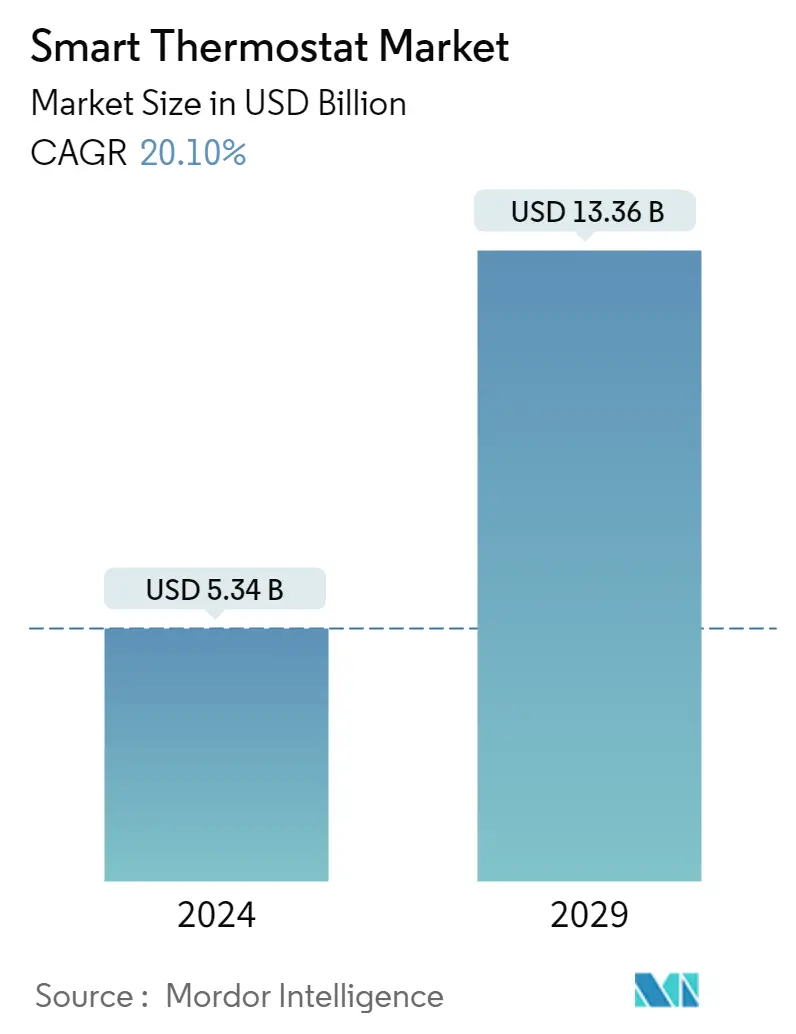Market Size of Smart Thermostat Industry

| Study Period | 2019 - 2029 |
| Market Size (2024) | USD 5.34 Billion |
| Market Size (2029) | USD 13.36 Billion |
| CAGR (2024 - 2029) | 20.10 % |
| Fastest Growing Market | Asia Pacific |
| Largest Market | North America |
Major Players
*Disclaimer: Major Players sorted in no particular order |
Need a report that reflects how COVID-19 has impacted this market and its growth?
Smart Thermostat Market Analysis
The Smart Thermostat Market size is estimated at USD 5.34 billion in 2024, and is expected to reach USD 13.36 billion by 2029, growing at a CAGR of 20.10% during the forecast period (2024-2029).
Lighting and other household appliances consume a considerable amount of energy, and presently, there is a dire need to use these energy resources efficiently. Therefore, governments are emphasizing the use of smart devices in homes.
- The increasing adoption of smart homes across the globe, the occurrence of the COVID-19 pandemic, the emergence of IoT-enabled HVAC systems, the surging adoption of smart home voice assistants, and government regulations pertaining to increasing the energy efficiency of buildings are some of the factors propelling the demand for Smart Thermostat Market over the next couple of years.
- Moreover, the critical factors driving the need for smart thermostats are convenience, energy conservation, energy tracking, and the need for an increase in potential savings. Also, the BYOT (Bring-your-own-Technology) trend is expected to stimulate the growth of the market over the forecast period. Consumers have independently begun purchasing smart Wi-Fi-enabled thermostats capable of receiving demand response control signals.
- Additionally, with a Wi-Fi connection and smart thermostats, virtual assistants, like Amazon Alexa, or Google Assistant, are increasingly being used to control and monitor the home temperature, program schedules, or manage the Air conditioning.
- A wireless network is the most widely used connectivity technology in smart thermostats as it helps the customers to bring down the maintenance and installation costs, along with providing higher scalability and flexibility, and enhanced connectivity.
- The installation of wireless connectivity makes smart thermostats more compatible with smart devices such as tablets, smartphones, and laptops for operation. Further, the increasing adoption of smart homes in the United States is expected to fuel the demand for smart thermostats based on wireless connectivity technology.
